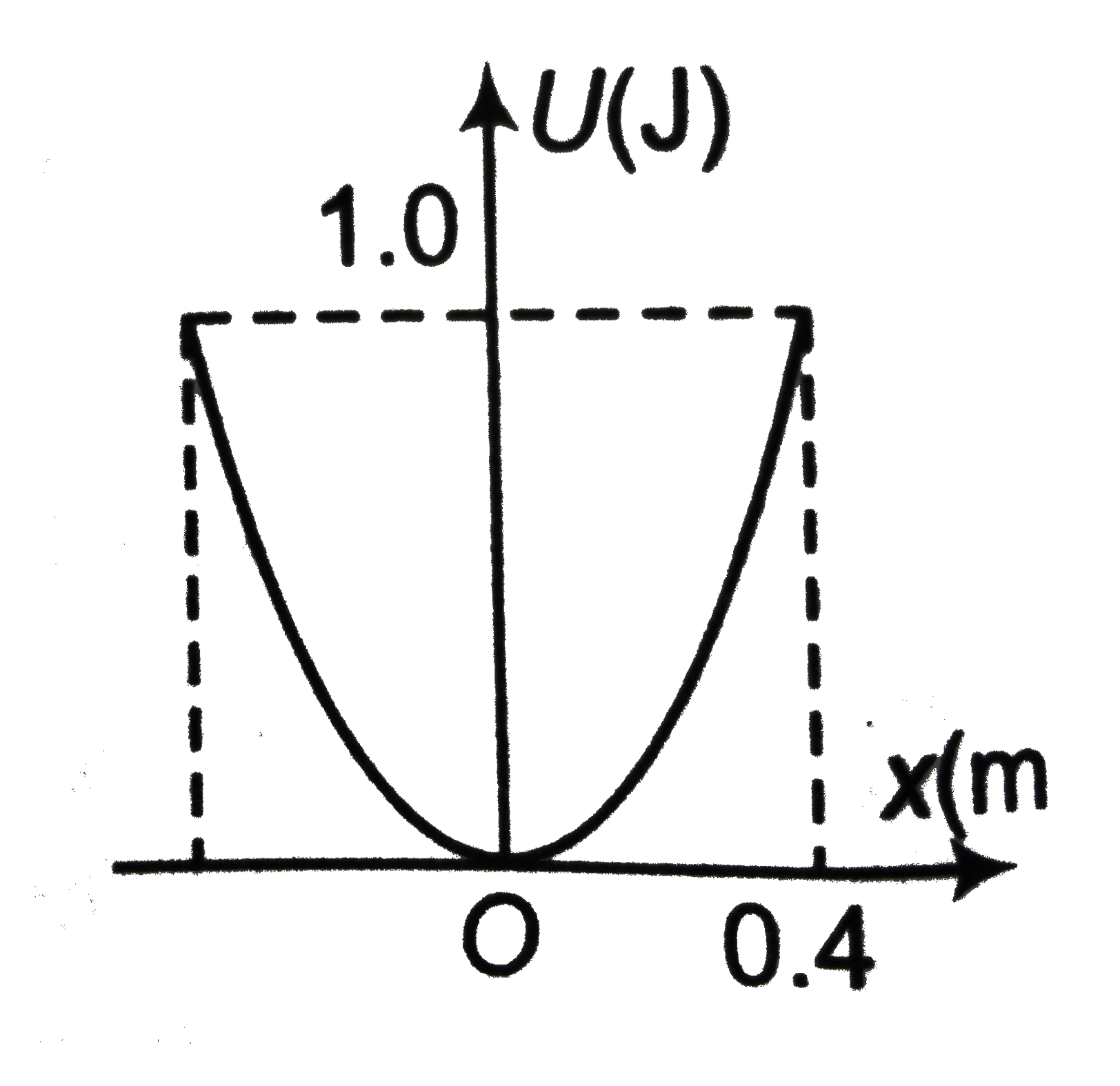A particle of mass 10gm is placed in a potential field given by V=(50x2+100)J/kg. The frequency of oscilltion in cyc≤/sec is
10π
(5)/(pi)
100π
50π
The correct Answer is:B
To solve the problem, we need to find the frequency of oscillation of a particle in a given potential field. Let's go through the solution step by step.
Step 1: Understand the Potential Energy
The potential energy V is given as:
V=50x2+100 J/kg
This represents the potential energy per unit mass, so the total potential energy U of the particle can be expressed as:
U=m⋅V=m⋅(50x2+100)
where m is the mass of the particle.
Step 2: Convert Mass to Kilograms
The mass of the particle is given as 10 gm. We need to convert this to kilograms:
m=10 gm=10×10−3 kg=0.01 kg
Step 3: Calculate the Total Potential Energy
Substituting the value of m into the potential energy equation:
U=0.01⋅(50x2+100)=0.5x2+1 J
Step 4: Find the Force
The force F acting on the particle is given by the negative gradient of the potential energy:
F=−dUdx
Calculating the derivative:
dUdx=ddx(0.5x2+1)=0.5⋅2x=x
Thus, the force is:
F=−x
Step 5: Relate Force to Simple Harmonic Motion
In simple harmonic motion (SHM), the force can also be expressed as:
F=−mω2x
Setting the two expressions for force equal to each other:
−x=−mω2x
This simplifies to:
1=mω2
Step 6: Solve for Omega
Substituting the value of m:
1=0.01⋅ω2
ω2=10.01=100
ω=√100=10 rad/s
Step 7: Calculate Frequency
The frequency f in cycles per second (Hz) is related to ω by:
f=ω2π
Substituting the value of ω:
f=102π=5π cycles/sec
Final Answer
The frequency of oscillation is:
f=5π cycles/sec
The potential energy V is given as:
V=50x2+100 J/kg
This represents the potential energy per unit mass, so the total potential energy U of the particle can be expressed as:
U=m⋅V=m⋅(50x2+100)
where m is the mass of the particle.
The mass of the particle is given as 10 gm. We need to convert this to kilograms:
m=10 gm=10×10−3 kg=0.01 kg
Substituting the value of m into the potential energy equation:
U=0.01⋅(50x2+100)=0.5x2+1 J
The force F acting on the particle is given by the negative gradient of the potential energy:
F=−dUdx
Calculating the derivative:
dUdx=ddx(0.5x2+1)=0.5⋅2x=x
Thus, the force is:
F=−x
In simple harmonic motion (SHM), the force can also be expressed as:
F=−mω2x
Setting the two expressions for force equal to each other:
−x=−mω2x
This simplifies to:
1=mω2
Substituting the value of m:
1=0.01⋅ω2
ω2=10.01=100
ω=√100=10 rad/s
The frequency f in cycles per second (Hz) is related to ω by:
f=ω2π
Substituting the value of ω:
f=102π=5π cycles/sec
The frequency of oscillation is:
f=5π cycles/sec
Topper's Solved these Questions
- DAILY PRACTICE PROBLEMBOOK - RESONANCE ENGLISHCHAPTER - DAILY PRACTICE PROBLEMEXERCISE - DPP No.46
11 Videos
- DAILY PRACTICE PROBLEMBOOK - RESONANCE ENGLISHCHAPTER - DAILY PRACTICE PROBLEMEXERCISE - DPP No.47
20 Videos
- DAILY PRACTICE PROBLEMBOOK - RESONANCE ENGLISHCHAPTER - DAILY PRACTICE PROBLEMEXERCISE - DPP No.44
10 Videos
- CURRENT ELECTRICITYBOOK - RESONANCE ENGLISHCHAPTER - CURRENT ELECTRICITYEXERCISE - High Level Problems (HIP)
19 Videos
- ELECTRO MAGNETIC WAVESBOOK - RESONANCE ENGLISHCHAPTER - ELECTRO MAGNETIC WAVESEXERCISE - Exercise 3
27 Videos
Similar Questions
A particle of mass 4 gm. Lies in a potential field given by V=200x2+150 ergs/gm. Deduce the frequency of vibration.
View SolutionA particle of mass 100 gm moves in a potential well given by U=8x2−4x+400 joule. Find its acceleration at a distance of 25 cm from equilibrium in the positive direction
View Solution
Knowledge Check
A particle in a certain conservative force field has a potential energy given by V=20xyz. The force exerted on it is
A(20yz)ˆi+(20xz)ˆj+(20xyz2)ˆkB−(20yz)ˆi−(20xz)ˆj+(20xyz2)ˆkC−(20yz)ˆi−(20xz)ˆj−(20xyz2)ˆkD(20yz)ˆi+(20xz)ˆj−(20xyz2)ˆk
The potential energy of a particle of mass 1 kg in motin along the x-axis is given by
U = 4(1-cos2x)J
Here, x is in meter. The period of small osciallationis (in second) is
View SolutionThere identical point masses, each of mass 1 kg lie in the xy-plane at points (0, 0), (0, 0.2 m) and (0, 2m, 0). The net gravitational force on the mass at the origin is:
View SolutionThe potential energy of a particle under a conservative force is given by U(x)=(x2−3x) J. The equilibrium position of the particle is at
View SolutionA particle of mass 2kg moves in simple harmonic motion and its potential energy U varies with position x as shown. The period of oscillation of the particle is

View SolutionA particle of mass 2kg moves in simple harmonic motion and its potential energy U varies with position x as shown. The period of oscillation of the particle is

View SolutionA bullet of mass 0.1 kg is fired with a speed of 100 m/sec , the mass of gun is 50 kg . The velocity of recoil is
View SolutionA bullet of mass 0.1 kg is fired with a speed of 100 m/sec , the mass of gun is 50 kg . The velocity of recoil is
View Solution
